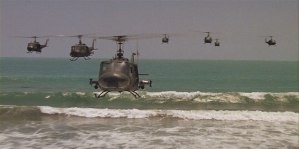The actors from a specific movie I chose to write about this week were from the film “Unforgiven”. This movie seemed to just call out to me for actor category descriptions and how the various actors themselves somehow fit into certain categories. The three actors I am writing about are Clint Eastwood, Morgan Freeman, and Gene Hackman.
Clint Eastwood has come to represent a certain character category in American films. The personality that he brings to any film commiserates with the expectations of the viewers. He almost always plays the quiet masculine lead character that can almost always be counted on to commit overwhelming violence on those who are deserving of his character’s retribution in films such as the Dirty Harry series, High Plains Drifter, and Hang em High. His characters are often gritty and down to earth with a somewhat questionable past…not quite the squeaky clean good guy in a white hat riding in to save the day, but the deliverer of vengeance and justice just the same. While he has strayed outside of this cliché of personality character that he brings to most of his movies in films such as The Bridges of Madison County and Million Dollar Baby, these are the exception and definitely not the rule when it comes to audience expectations of Clint Eastwood’s characters.
Gene Hackman in my opinion is a great character actor whom it seems is capable of filling virtually any role in a believable manner. He has played the role of both good guys and bad guys with equal success over the years. In the movie Enemy of the State, Hackman played a disillusioned, yet well-intentioned former National Security Agency analyst who was grumpy and mean spirited, while also being smart and resourceful. In the movie “Unforgiven”, Hackman plays a corrupt sheriff, who is likeable enough to poke fun at himself about building his own house, while brutal in his dealings with anyone who threatens the peace of his town or his authority. Though he may not be one of the highest paid or most widely well-known actors, he is a great actor capable of adapting to any role and making it completely believable.
Morgan Freeman is definitely the wildcard actor of the three since he is probably the most difficult to categorize into one area. Morgan Freeman is one of those actors who is able to adapt to any role and definitely portrays each character based upon the circumstances of the storyline equally across the board (Goodykoontz & Jacobs, 2011). In the movie Shawshank Redemption, Freeman plays the happy-go-lucky character Red who on the surface seems to be a complete contradiction to the character’s backstory. His character who is in prison for a murder he committed as a young man seems to be wise and capable beyond his years of imprisonment, yet accepts full accountability for his actions in the past. In the movie Unforgiven, Morgan Freeman plays the role of the reformed former outlaw who has moved on beyond his character’s past and now just simply wants to live out his days. While there are similarities in these two, the character feels completely different to the audience. Freeman further shows the depth of his character portrayal in Driving Miss Daisy, Seven, and Million Dollar baby where he portrays characters that are nothing like any of his other characters. While there are glimpses of Freeman’s personality in each one, they are not the predominate feature of any of these characters which would place him into any other category of actor.
References
Enemy of the State. (1998). Discovering the Tracking Devices, Retrieved from
http://www.youtube.com/watch?v=2u6KdHmoMbw&list=PLWwnJaUd14CBIyUs9bCzRZj_vdv1T6Jp5
Goodykoontz, B. & Jacobs, C. (2011). Film: From Watching to Seeing. San Diego, CA:
Bridgepoint Education, Inc.
The Shawshank Redemption. (1994). Monologues: Morgan Freeman in The Shawshank
Redemption, Retrieved from http://www.youtube.com/watch?v=TeBU3tiYY0U
Unforgiven. (1992). Unforgiven – Original Trailer, Warner Brothers, Retrieved from
http://www.youtube.com/watch?v=TeBU3tiYY0U
